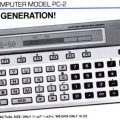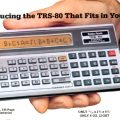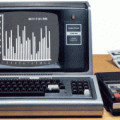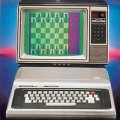The TRS-80 Model III
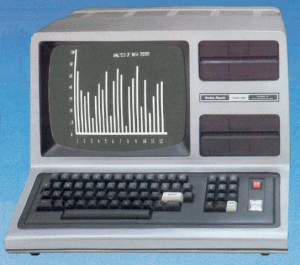
A Model III from a Radio Shack catalog
The Model I was a very popular computer, but generated a great deal of radio interference as was common among computers at the time. To combat this trend, the FCC created much stricter guidelines governing interference. These regulations had the effect of outlawing the sale of the Model I.
Radio Shack introduced the eventual replacement to the Model I, the Model III, in 1980 (the Model II, introduced in 1979, was part of a separate line of business computers). Unlike the Model I, the Model III was an all-in-one design; the monitor, keyboard, and disk drives were all in the same unit. This cut down on radio interference and helped with school sales (which were concerned with students walking away with computer components in their bags). Like the Model I, the Model III used a Z-80, but running at 2.0 MHz this time. The Model III was largely, but not completely, software and hardware compatible with the Model I. It featured a more powerful 14K Level II BASIC ROM, lowercase support, and had a numeric keypad built right in. It had sockets to support up to 48K RAM internally, two internal drive bays, and with an optional floppy disk controller, operated in double-density by default.
Radio Shack created another version of TRSDOS for the Model III, which ended up as TRSDOS 1.3. This could run some (but not all) Model I software, and used a different disk format. The Model I operating systems NEWDOS, DOSPLUS, LDOS, and MULTIDOS were rewritten for the Model III. None of them used the Model III TRSDOS disk format, but they did support many of the TRSDOS 1.3 software calls (at the expense of some Model I compatibility). This led to the need for separate Model I and III versions of many programs.
